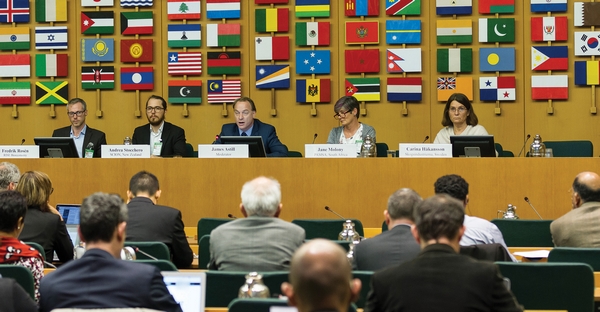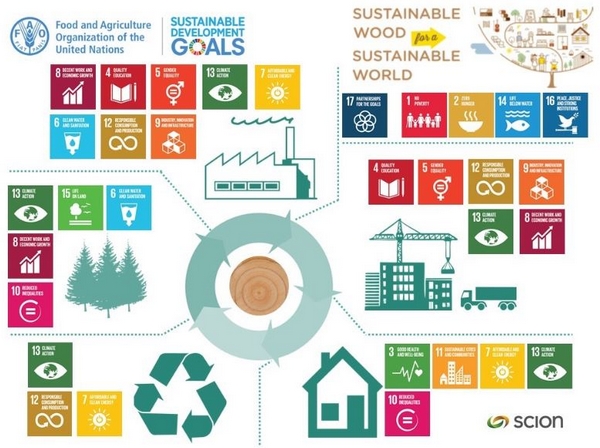Sustainable wood for sustainable development

Wood is the world’s most used renewable resource. We rely on it for building materials, heating sources, musical instruments, modes of transport, clothes and packaging. But, are the full benefits of wood being realised?
To explore the advantages of sustainable wood, the United Nations Food and Agriculture Organisation (FAO) and its partners hosted the ‘Sustainable Wood for a Sustainable World’ global meeting at their headquarters in Rome from 31 October – 1 November. Their aim was to discuss how forests and the use of sustainable wood products can contribute to the 2030 Agenda for Sustainable Development through the 17 United Nations Sustainable Development Goals (SDGs). New Zealand had a voice at the table through representation from Scion.
UN Sustainable Development Goals and sustainable wood
In 2015, world leaders from 150 countries, including New Zealand, adopted the 2030 Agenda for Sustainable Development, including the SDGs that aim to end poverty and ensure prosperity for all, while protecting the planet. The SDGs cover a wide range of themes from the three dimensions of sustainable development: economic, social and environmental.
The objectives for the Sustainable Wood for a Sustainable World global meeting (SW4SW) were to show how, when and where wood is delivering contributions to the 2030 Agenda for Sustainable Development, unblock markets and finance for sustainable wood and dispell the perception of wood production as a driver of environmental damage and inequity.
In response to a suggestion from David Rhodes (New Zealand Forest Owners Association), Scion’s Sustainable Architect Andrea Stocchero was invited to SW4SW to represent the international wood design and construction sector, New Zealand and Scion. He was featured on a panel addressing how wood product use in construction contributes to sustainability and climate change mitigation, and participated in the ‘Sustainable wood products for the SDGs’ breakout group.
“An important outcome from the global meeting was the agreement that sustainable wood use contributes to achieving all 17 SDGs” says Andrea. “It’s especially evident when considering the whole value chain with an integrated system approach.” This thinking put new emphasis on considering value systems that spread the benefits of sustainable wood across the community and the natural environment.
He explains that using wood in construction supports local communities. “It fosters integration across a multi-industry value chain that spans forestry, wood product manufacturing, building design and construction, including waste management, energy production, logistics and transportation. This provides employment opportunities for all genders and levels of qualifications, in both rural and industrialised areas worldwide, contributing to SDGs 4, 5, 8 and 10.” Andrea says there are similar examples of benefits for all of the other SDGs.
The image below shows sustainable wood use contribution to all the SDGs from across the integrated value system in relation to its use in construction.

Aligning with the SDGs
The global meeting prompted an initiative from the FAO and its partners to support sustainable wood value chains to have a strengthened role in sustainable development.
Governments, businesses and civil society around the world are currently mobilising efforts to achieve the Sustainable Development Agenda by 2030. Scion and New Zealand will be contributing to these efforts by supporting forestry, wood products, wood-derived materials, and other biomaterial sectors and achieving the SDGs through research, science and technology development.
Andrea says, “Human history has been deeply influenced by the use of wood. Using wood is part of the common cultural heritage of humanity and it is time we recognise the wider benefits sustainable wood can bring to society, economy and natural environment and that we advocate for its use.”
